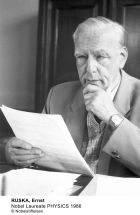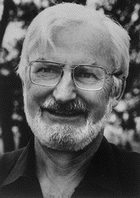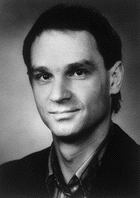Microscopes and Nanoscale Science
 Ernst Ruska
Ernst Ruska
 Heinrich Rohrer
Heinrich Rohrer
 Gerd Binnig
Gerd Binnig
Nanoscale science was enabled by advances in microscopy, most notably the electron, scanning tunneling and atomic force microscopes, among others. The 1986 Nobel Prize for Physics honored three of the inventors of the electron and scanning tunnel microscopes, Ernst Ruska, Gerd Binnig and Heinrich Rohrer.
Exploring the World through Microscopes
The scanning tunneling microscope (STM) is one of a number of instruments that allows scientists to view and manipulate nanoscale particles, atoms and small molecules. The STM, which was first used in the mid-1980s, allowed scientists not only to see details of atomic structures, but also to manipulate those structures. STMs have opened the door to images of what happens out of sight of the naked eye.
A precursor instrument, the topografiner, was invented by Russell Young and colleagues between 1965 and 1971 at the National Bureau of Standards (NBS) [currently the National Institute of Standards and Technology (NIST)].
More Information on Microscopy
See also the Nobel Prize website for a microscopy timeline and general information on microscopy, how microscopes help scientists explore hidden worlds.
- NIST Advancing Nanoscale Research with New Helium Ion Microscope
- DoE Center Opens; Offers Users Low-Energy Electron Microscope to Study Nanomaterials
- Molecular Expressions—Science, Optics and You, Florida State University.
- The Nanoworld Center for Microscopy and Microanalysis (University of Queensland, Australia).
- See the Boston Museum of Science site for scanning electron microscopes and numerous microscopy resources.
- See the SPM Animation Gallery.
- See the UCLA Physics Dept. site for information on the field emission electron microscope.